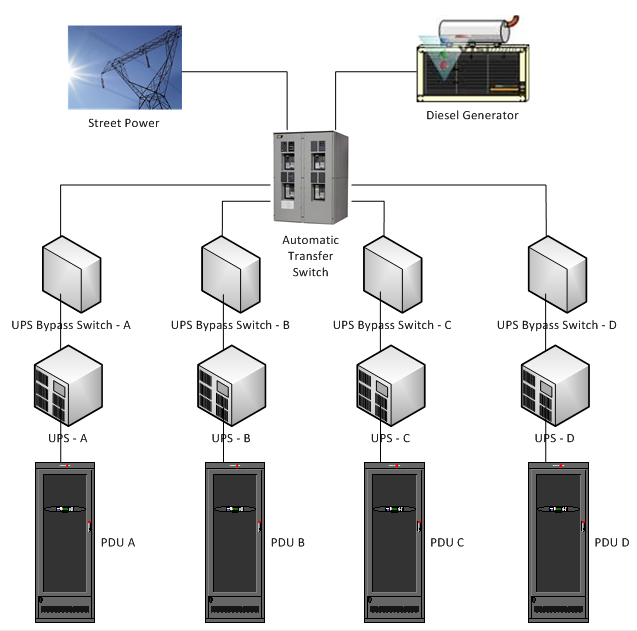How the Power System in a Data Center works
Data centers are mainly build to host server and also other electrical appliances to support their daily operations or devices are the term that we are all used to. These devices need power supply to work as any other home computers but in a data center there so many of these devices that it needs power supply 100x the power of a large commercial office. About 40% of the cost to run a data center is caused by the huge power consumption and most newly build data center facilities are trying their best to be powered by green energy by the year 2020. Typically, a large power grid or a transformer is used to supply power to a data center facility but having one larger power source will not be a very safe practice because data centers are supposed to be operational 24/7. To overcome this power issue, they data center facility is also equipped with a backup power supply available when there is a power outage. Backup power supplies are basically large batteries and diesel-powered generators build within the facility for such emergency power outages. For example, when a power failure happens the Uninterruptable Power Supply (UPS), which are batteries, will automatically be activated to supply power for up to 15 minutes. During that period, the emergency diesel powered generators are started and they will provide electricity to the data center until the issue is resolved. The UPS buys time for the generators to provide the required power to the data center.
The below examples of power supply configuration: 
The Cooling System
All electronic devices are heat generators, especially servers. Heat caused by the nonstop operation of the servers and overheating will reduce the performance of the devices and it could even fail. To minimalize heat produced by the devices they are installed in a rack which may have 42 rack units. Size of the rack may vary depending on the user's requirement. This rack will be arranged in rows and facing each other creating aisles in between. This will also prevent servers from absorbing heat from the opposite row and with both rows front door is accessible for the user to work on the devices. It is called 'cold aisle' because cold air will be blown through holes on the floor board, this type of floor board is called 'airflow panels'. Both end of the aisle is blocked off by PVC strip curtains to block cold air from escaping. When the cold air is blown from the airflow panels and they flow through the racks to dissipate the heat produced by the devices. The warm air will be removed by the air conditioning system.
The below examples is an image of the cooling system process: 
Below are examples of an UPS System & Generator

An uninterruptible power supply, also uninterruptible power source, UPS or battery/flywheel backup, is an electrical apparatus that provides emergency power to a load when the input power source or mains power fails. A UPS differs from an auxiliary or emergency power system or standby generator in that it will provide near-instantaneous protection from input power interruptions, by supplying energy stored in batteries, supercapacitors, or flywheels. The on-battery runtime of most uninterruptible power sources is relatively short (only a few minutes) but sufficient to start a standby power source or properly shut down the protected equipment. Learn more

An emergency power system is an independent source of electrical power that supports important electrical systems on loss of normal power supply. A standby power system may include a standby generator, batteries and other apparatus. Emergency power systems are installed to protect life and property from the consequences of loss of primary electric power supply. Learn more
Other types of power supply available:
| Types | Description |
|---|---|
| DC power supply | A DC power supply is one that supplies a constant DC voltage to its load. |
| AC power supply | An AC power supply typically takes the voltage from a wall outlet (mains supply) and lowers it to the desired voltage. |
| AC-to-DC supply | Some DC power supplies use AC mains electricity as an energy source. Such power supplies will sometimes employ a transformer to convert the input voltage to a higher or lower AC voltage. |
| Programmable power supply | A programmable power supply is one that allows remote control of its operation through an analog input or digital interface. |